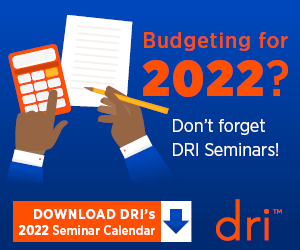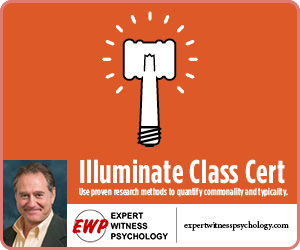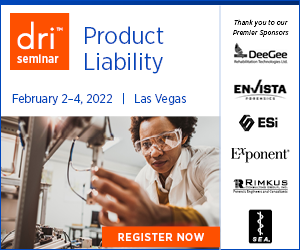From the Editor
A Succinct Summary Regarding Court Appointed Experts
By Patrick J. Kenny
A few years ago the From the Editor column reviewed the in-depth analysis in Willis v. Palmer, No. 12-4086-MWB, 2016 WL 3742246 (N.D. Iowa June 20, 2016), regarding the application of Rule 706 governing the appointment of expert witnesses by the court. There the district court extensively analyzed a court’s power to appoint experts and logistical questions associated with such appointments, and developed a procedure for the nomination, selection, and payment of experts under Rule 706.
The Eighth Circuit dismissed the interlocutory appeal of the Rule 706 order in Willis, implying in its two-sentence order that:
(a) an interlocutory appeal might be possible from an order that requires a party to advance funds to pay the court appointed expert. See Willis v. Palmer, No. 16-3142, 2017 WL 4014978, at *1 (8th Cir. Jan. 4, 2017) (dismissing appeal “without prejudice to the filing of a renewed appeal if the district court orders the State to advance funds for the payment of court-ordered experts”); and
(b) district courts should be careful to avoid the appearance of partiality when appointing experts under Rule 706. See id. (referencing Karsjens v. Piper, Case No. 15–3485 (8th Cir. January 3, 2017), which concerns arguments by the State that court appointed experts had the effect of making the court an advocate for the plaintiff).
The Willis opinion, and the Eighth Circuit’s dismissal of the interlocutory appeal from that ruling, remain good resources for practitioners and courts when considering issues related to Rule 706 experts.
More recently, in Houston v. Corizon Health Care, 513 F. Supp. 3d 1100 (E.D. Mo. 2021), the Eastern District of Missouri shed further light on the standard under which a court might exercise its discretion to appoint an expert under Rule 706. There, a pro se prisoner moved the court to appoint an independent medical expert “to establish the alleged delay in medical treatment had adverse effects.” Id. at 1100. The court denied the motion, without prejudice, noting that courts usually “require[e] extraordinary and compelling circumstances to justify appointing an expert witness under this rule[.]” Id. at 1101 (citations omitted).
The problem for the plaintiff in Houston appears to be that he framed his motion in terms of seeking expert testimony as to the “adverse effects” from the alleged delay in medical treatment. One of the authorities cited in the Houston decision explains that “exceptional cases” in which a Rule 706 expert might be warranted are those “in which ordinary adversary process does not suffice[.]” Malady v. Corizon, No. 1:13CV80 SNLJ, 2013 WL 5835995, at *1 (E.D. Mo. Oct. 30, 2013).
In Houston, therefore, it is not surprising the court denied the motion for an independent expert in that it was premised upon the need for testimony as to the “adverse effects” plaintiff suffered. After all, the plaintiff in Houston presumably “is able to testify to the effect of his medical condition upon him.” Houston, 513 F. Supp. 3d at 1101.
Of course, it would seem that the plaintiff in Houston also likely will need expert testimony addressing the medical standard of care, and on that topic plaintiff likely cannot testify. Thus, it also is not surprising that the court in Houston denied the motion to appoint independent counsel without prejudice. See id.
As always, if you should have any thoughts or feedback on this column, please do not hesitate to contact me.
 Patrick J. Kenny serves as the Editor-in-Chief of Daubert Online and served for many years as a member of and Expert Witness Chair for the Steering Committee for DRI’s Commercial Litigation Committee. He is a partner with Armstrong Teasdale LLP where he chairs the firm’s Class Action Practice Group and is an active member of the firm’s Insurance Coverage and Litigation Practice Group and the Appellate Practice Group. He has received numerous recognitions for his insurance and commercial litigation practices including listing by Best Lawyers® as the 2016 Insurance Law “Lawyer of the Year” in St. Louis. He also long has been listed as a “Super Lawyer” by Missouri/Kansas Super Lawyers / Super Lawyers Business Edition, he has an AV rating in Commercial Litigation and as an Appellate Lawyer by Martindale-Hubbell and American Lawyer Media (ALM), and he is included in Chambers USA’s listing of America’s Leading Lawyers for Business in its Missouri insurance listing. He previously served as a judicial clerk to the Hon. Pasco Bowman (U.S.C.A., Eighth Circuit). He handles complex litigation and appellate matters including bad faith and insurance coverage disputes, ERISA litigation (pension and benefits), statutory actions, and matters involving fraud, non-compete agreements, and trade secrets. He has tried jury cases to verdict in Missouri and Illinois, handled and supervised numerous appeals, and served as a neutral in scores of cases. He can be reached at Armstrong Teasdale LLP, 7700 Forsyth Blvd., Ste. 1800, St. Louis, MO 63105, (314) 552-6613 (direct), (314) 612-2262 (direct fax), email: pkenny@armstrongteasdale.com. For further information click on: http://www.armstrongteasdale.com/patrick-kenny.
Patrick J. Kenny serves as the Editor-in-Chief of Daubert Online and served for many years as a member of and Expert Witness Chair for the Steering Committee for DRI’s Commercial Litigation Committee. He is a partner with Armstrong Teasdale LLP where he chairs the firm’s Class Action Practice Group and is an active member of the firm’s Insurance Coverage and Litigation Practice Group and the Appellate Practice Group. He has received numerous recognitions for his insurance and commercial litigation practices including listing by Best Lawyers® as the 2016 Insurance Law “Lawyer of the Year” in St. Louis. He also long has been listed as a “Super Lawyer” by Missouri/Kansas Super Lawyers / Super Lawyers Business Edition, he has an AV rating in Commercial Litigation and as an Appellate Lawyer by Martindale-Hubbell and American Lawyer Media (ALM), and he is included in Chambers USA’s listing of America’s Leading Lawyers for Business in its Missouri insurance listing. He previously served as a judicial clerk to the Hon. Pasco Bowman (U.S.C.A., Eighth Circuit). He handles complex litigation and appellate matters including bad faith and insurance coverage disputes, ERISA litigation (pension and benefits), statutory actions, and matters involving fraud, non-compete agreements, and trade secrets. He has tried jury cases to verdict in Missouri and Illinois, handled and supervised numerous appeals, and served as a neutral in scores of cases. He can be reached at Armstrong Teasdale LLP, 7700 Forsyth Blvd., Ste. 1800, St. Louis, MO 63105, (314) 552-6613 (direct), (314) 612-2262 (direct fax), email: pkenny@armstrongteasdale.com. For further information click on: http://www.armstrongteasdale.com/patrick-kenny.















